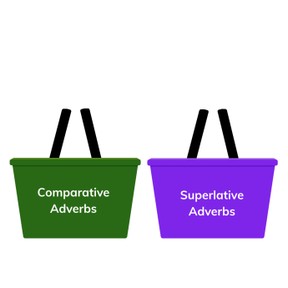
Comparative and superlative adverbs
I can use comparative and superlative adverbs in my speech and writing.



8,000 schools use Gynzy
92,000 teachers use Gynzy
1,600,000 students use Gynzy
General
In this lesson, students will learn comparative and superlative adverbs: what they are, how to use them, and the rules they follow. Students will practice using these adverbs in various activities in the lesson. They will also decide when to use comparative adverbs and when to use superlative adverbs.
Standards
CCSS.ELA-Literacy.L.3.1g
Learning objective
Students will be able to use comparative and superlative adverbs in my speech and writing.
Introduction
Students will review adjectives and adverbs.
Instruction
Students will be introduced to comparative adverbs, which compare the action of two people or things. Explain the rules of comparative adverbs: adding -er to adverbs to compare the action of two people or things (and what happens to the rule-breaker words). Explain the rules of superlative adverbs as well: adding -est to most short adverbs.
Students will sort between comparative and superlative adverbs. They will identify the correct comparative or superlative adverbs in sentences and tell whether the adverb is comparative or superlative.
Quiz
Students will complete 10 questions identifying comparative and superlative adverbs.
Closing
Students will go "shopping" for adverbs and add words to a comparative adverbs shopping basket or a superlative adverbs shopping basket. Students will get to choose a comparative adverb and a superlative adverb to make statements about two pictures.
The online teaching platform for interactive whiteboards and displays in schools
Save time building lessons
Manage the classroom more efficiently
Increase student engagement
Discover more!
About Gynzy
Gynzy is an online teaching platform for interactive whiteboards and displays in schools.
With a focus on elementary education, Gynzy’s Whiteboard, digital tools, and activities make it easy for teachers to save time building lessons, increase student engagement, and make classroom management more efficient.



